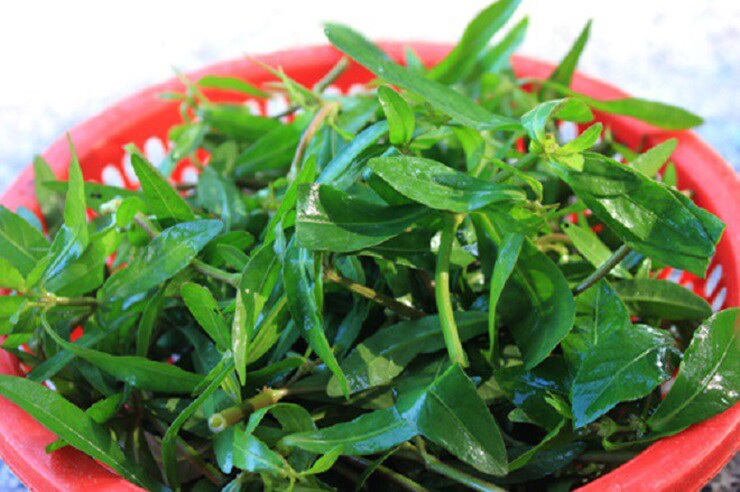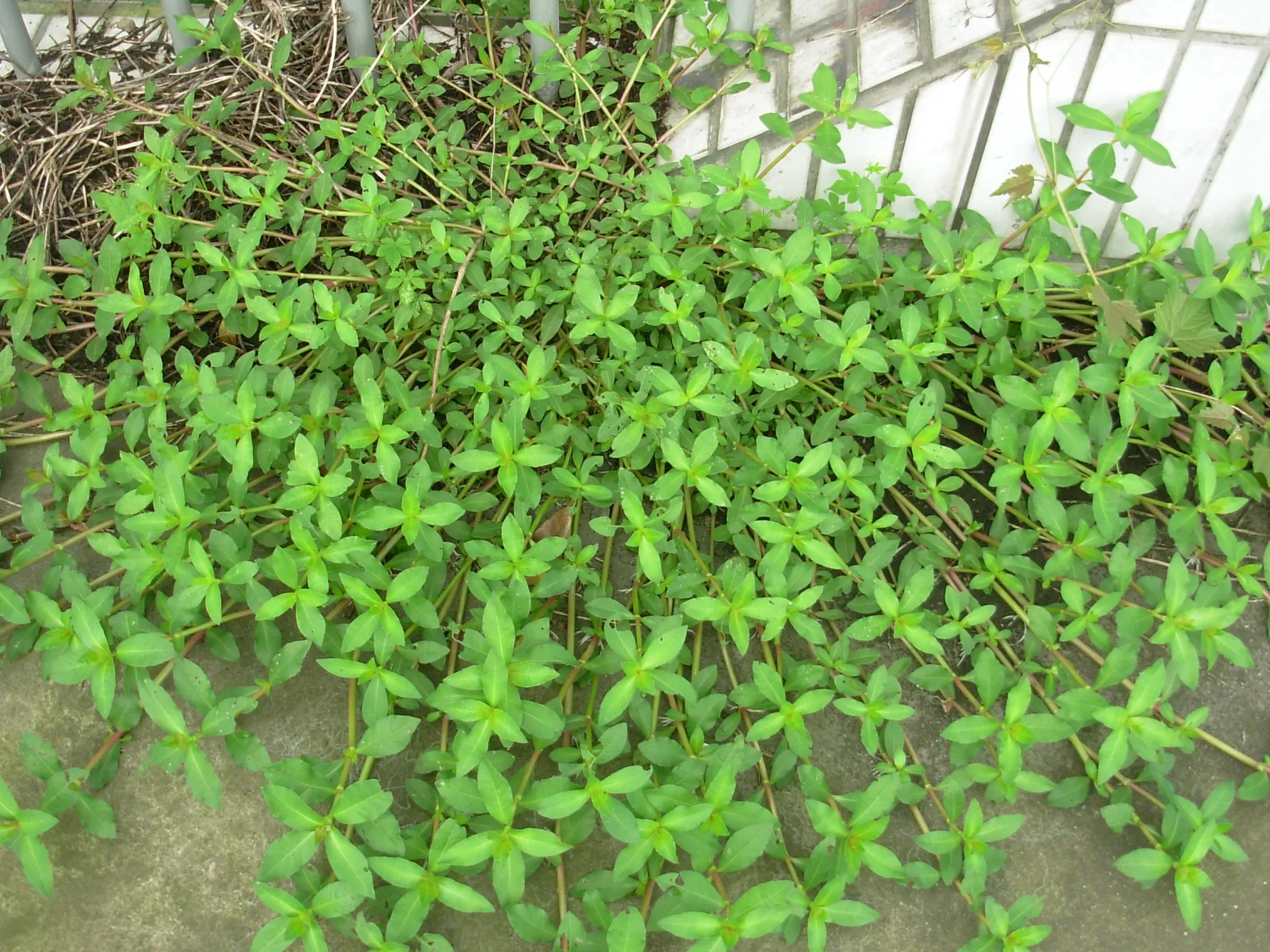
Meet Alternanthera philoxeroides, commonly known as Alligator Weed or Alligator Fennel. This creeping herb, native to South America, has now become a delicacy in Vietnam, fetching prices of 50,000 to 70,000 VND per kg. With its ability to thrive and spread rapidly, this once-wild plant has transformed into a sought-after culinary ingredient.
Growing to a length of 40-60 cm, Alligator Weed has a sprawling habit with multiple branching stems. Each stem can form adventitious roots, creating dense, shrubby growth. The leaves are oppositely arranged, lanceolate, and coarse, reaching lengths of 4-6 cm and widths of about 2 cm. During its flowering season, from November to December, you’ll find clusters of small, white, sessile flowers in the leaf axils, followed by fruits that contain a single brown seed—the key to its persistent growth.

Alligator Weed has made a remarkable journey from a humble weed to a culinary specialty. Its versatility in the kitchen is remarkable—it can be cooked into a soup with shrimp or minced meat, stir-fried with garlic, or combined with other vegetables like amaranth and celery. The natural sweetness and distinctive aroma of this herb make it a memorable dish for many.
Beyond its delicious flavor, Alligator Weed is a nutritional powerhouse. In 100g of this herb, you’ll find 80.3% water, 2.1% fiber, 4.5% protein, 5.1mg of carotenes, 77.7mg of vitamin C, 98mg of calcium, 12mg of iron, and a host of other essential minerals. It’s no wonder that this plant is highly regarded in both traditional and modern medicine.

In traditional medicine, Alligator Weed is believed to have a sweet taste and a cooling nature. It is used for its diuretic and anti-inflammatory properties and is often employed to treat skin conditions, eczema, allergies, diarrhea, and hemorrhoids. Additionally, it is considered particularly beneficial for lactating women, as it is thought to increase milk production.
Modern medicine also recognizes the herb’s value, thanks to its rich antioxidant content, including flavonoids, phenolics, and tannins. These compounds contribute to its anti-inflammatory, antibacterial, anticancer, and cardiovascular protective effects.
The entire plant is usable, and its year-round availability makes it a reliable resource. While the young leaves are perfect for cooking, the older stems can be dried and used to make herbal tea or medicine.

Cultivation and Care of Alligator Weed
Alligator Weed is propagated by seed. In its natural habitat, the plant flowers and fruits, with the seeds quickly sprouting into new plants upon falling to the ground.
If you wish to cultivate this herb, you can purchase seeds from specialty vegetable seed stores. A packet of Alligator Weed seeds typically costs around 50,000 VND and contains about 100 seeds.

Alligator Weed flowers are small and white.
The seeds are tiny and do not require soaking before sowing. Prepare a loose and airy seedbed, then evenly scatter the seeds and cover them with a thin layer of soil or organic matter like water hyacinth, straw, or hay to retain moisture. Gently mist the area with water.
Within 10 to 15 days, the seeds will germinate. Alligator Weed is remarkably resistant to pests and diseases, making its care relatively effortless.

Note that this plant thrives in sunny conditions, so choose a spot with ample sunlight. While it prefers moist conditions and is adaptable to various soil types, it performs best in loamy soil with a pH between 5.5 and 7.
With just one sowing, you can enjoy a bountiful harvest throughout the year. Moreover, due to its rapid growth, branching, and natural regeneration from seeds, a single planting can provide you with a sustainable supply for years to come.

































